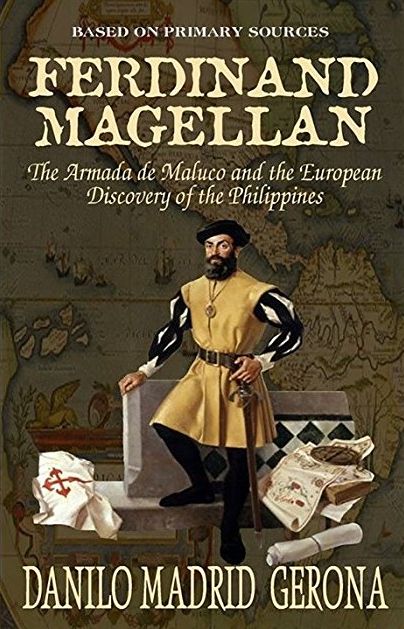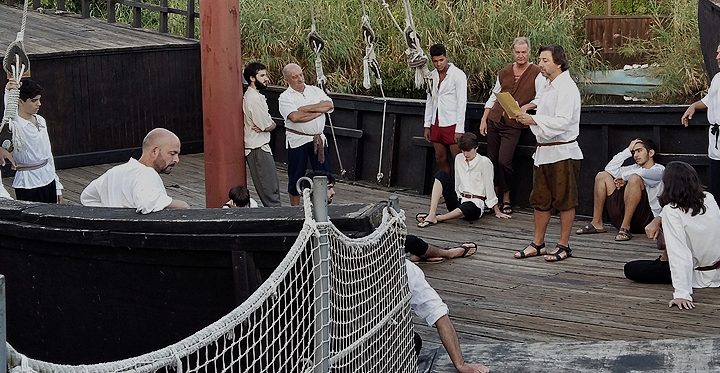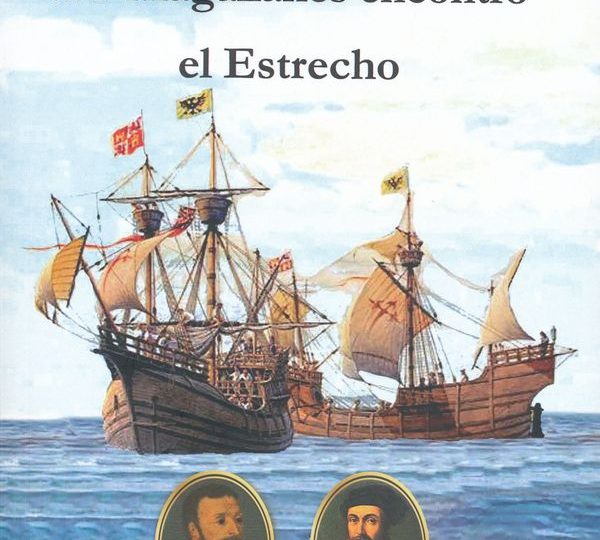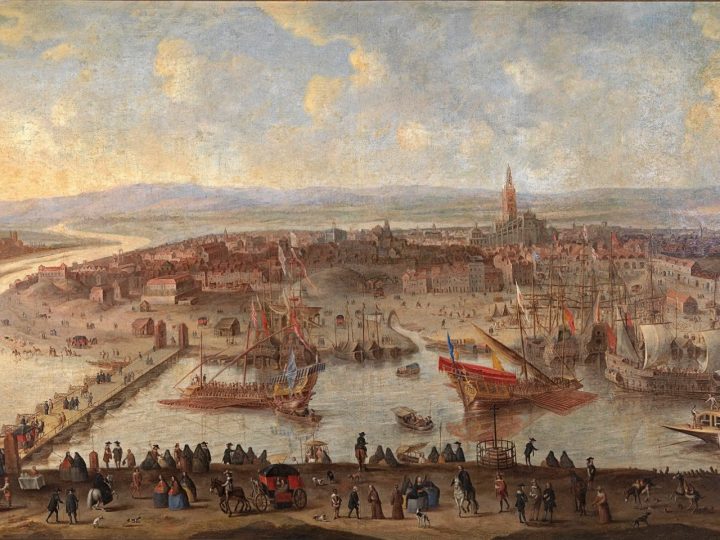
On Friday, October 20, 2017, the residents of Seville will be celebrating the 500 years of Magellan’s arrival in their city which opened the way for his historic journey of discoveries and the circumnavigation of the world. This brief essay, mainly culled from my book, Ferdinand Magellan Armada de Maluco and the European Discovery of the Philippines, provides a glimpse into the indispensable role of the city in the great navigator’s journey.

Magellan, a vecino of Portugal where he served with great dedication in various expeditions and campaigns to the east and to Africa, had fallen out of favour with his king, Emmanuel I. As he could not hope to stir interest for carrying out his plans in Portugal, misjudged and ignored, by his King who even refused him the ultimate privilege of kissing the royal hand, Magellan found no other alternative but leave his homeland and renounced his nationality. Nursing the wounded pride he received from his ungrateful Monarch, Magellan with several other friends he induced to come such as Alvaro de Mezquita, Estevan Gomez, Joao Carvalho, and Ruy Falero, among others, left Lisbon for Seville around the second week of October 1517. After a brief overland journey, these men arrived in Seville on October 20, 1517.
From the first half of the sixteenth century onward, the population of Seville witnessed a phenomenal rise beginning in 1500 when this city registered some 60,000 inhabitants. But a calamity which struck the city in 1507 left a major scar in the memory of the residents when a plague carried to the grave some 1,500 persons in just one of the parishes called La Magdalena during the third week of May alone. But the devastating effect of this plague on the population of Seville became apparent when it spread to the other parishes. An eyewitness claimed that after the plague some places had been reduced to virtual ghost towns and grass grew in places where earlier on bustling plazas once stood. By 1530, almost thirty years after the plague swept the city and eight years after the Magellan voyage returned, the population of Seville peaked to more than 70,000, making her one of the third most populated cities in Spain, next only to Burgos and Salamanca. Around the middle of the sixteenth century, a historian of the city proudly described Seville’s vibrant commercial center as dotted with “alcaycerias or markets for raw silk, and its stores flooded with luxury items such as gold and silver, pearls, crystals, precious stones, enamelled items, brocades, fine fabrics and handkerchiefs.”
For men like Magellan, Seville was the explorers’ Mecca, with enviable reputation as the forefront for maritime explorations. The author of the 1587 Historia de Sevilla, Espinosa de Montero, recalled that the first man to see the Americas in the Columbus expedition was a native of the City, a resident of Triana, the sailors’ quarter in the City of Seville. Hardly inhabited during the entire stretch of Moorish occupation of the city hundreds of years before Magellan’s arrival, the district of Triana went through a phenomenal urban development during the sixteenth century, «el crecimiento notablisimo del nucleo urbano,» in the words of a Spanish historian. This was largely attributed to the rise of a seafaring class or gente de mar, composed of pilots, owners of vessels, sailors, and all crew and artillery men. In subsequent years, many Sevillanos would also earn great fame for their explorations in the West Indies.
As the nerve center of the imperial life, Seville was home to the most illustrious hidalgos in the sciences, arts, culture, religion, military and pioneering conquistadores in Spain’s overseas explorations. The city’s foremost residents included Juan Hispalense, a renowned mathematician; Bartolome de las Casas, Bishop of Chiapas, who earned renown as the “Protector of the Indians;” Francisco Lopez de Gomara, royal chronicler, as well as Amerigo Vespucci, Hernan Cortez, Francisco Pizarro and a host of conquistadores and misioneros who blazed trails in the temporal and spiritual conquests of the Americas. One of the most distinguished residents in Seville in the sixteenth century was the linguist, Antonio de Nebrija. In taking pride of the accomplishment of Nebrija and his place in Spain’s golden age, Espinosa wrote: “ In conclusion, a Sevillian could say that in the history of his fatherland, it was this great man who was the father of fine letters in Spain just as Petrarch was in Italy.”
The presence of a vibrant cosmopolitan community, particularly the growing number of Portuguese migrants wielding substantial influence, was an added incentive for Magellan to prefer Seville. One of these Portuguese expatriates was the affluent and influential family of Diogo Barbosa. Serving as the commander of the Alcazar of Seville, Barbosa settled in this city fourteen years earlier and became the Knight Commander (comendador) of the Order of Santiago. His marriage to Maria Caldera gave birth to at least five children, two boys and three girls. The boys were Duarte and Jaime; the girls Isabel, Guiomar and Beatriz. Isabel was married to a knight in Seville named Alonzo Ortiz, while Guiomar married Gaspar de Viernes, also a knight in the same military order in the city. Most historians mentioned them as the only members of the Barbosa family, but the sworn statement in 1540 made by one of the surviving sons of the Barbosa family suggests there were others. After indicating the names of his siblings (those already mentioned earier), Jaime Barbosa added, «and others already deceased (y otros que son fallecidos).» From among these children, it was Beatriz, the epitome of a tragic character, who immortalized the family in history.
Few days after his arrival, Magellan formalized his change of loyalty from a Portuguese to a Spanish subject, from Fernao de Magalhaes, he became Hernando or Fernando de Magallanes. Two months after, in December, Ruy Falero, joined him in that city, another man who bitterly abandoned his homeland after being rejected, according to the 16th century Annales de Aragon, in his application to become an astrologo judiciario or an official court astrologer. From that time on, Magellan and Falero formed a team of Portuguese expatriates seeking opportunities deprived of them in their homeland.
Invited to lodge in Diogo’s residence, Magellan developed a more intimate affair with his host’s daughter, Beatriz, resulting in marriage in a year’s time, or sometime before January 20, 1518. From Beatriz’ dowry of 600,000 maravedis, Magellan quickly established himself in Seville and acquired sufficient money to spend for his initial expenses in his project. Already pregnant at the time of their marriage, Beatriz Barbosa bore a son less than a year after, named Rodrigo who was only six month-old at the time of Magellan’s historic journey.
Barely a few months after his transfer to Spain, Magellan established powerful connections through the efforts of his future father-in-law, Diogo Barbosa, with the officials of the Casa de Contratacion, one of the most important royal offices created in the wake of the rise of Spain as a world power. The Casa de Contratacion or the Trading House of the Indies was opened by the King in the Seville shipyards in 1503 for the trade and commerce of the West Indies, the Canaries, and such other islands already discovered or might be discovered in the future.
The Casa de Contratacion served not only as the clearing house of trade but also Spain’s pioneering maritime archive, the repository of navigational logs of mariners travelling to the Americas. This made Seville the ideal place both for trade and for maritime research, as well as for establishing connections with sailors and royal bureaucrats. If was from this imperial house that Magellan would expand his geographic knowledge of the world, one of his indispensable guides in his historic journey.
The author is a member of the Comite Internacional of the Fundacion Civiliter Sevilla 2019-2022, an international council based in the city of Seville which spearheads the celebration of the 500 years of Magellan’s circumnavigation of the world.
Newer
"Incluso con el apoyo del Emperador, armar la flota fue para Fernando de Magallanes casi tan difícil como la propia circunnavegación".
Older
El académico Juan Gil abrirá esta tarde, en el Real Alcázar de #Sevilla, el ciclo de conferencias “500 años de la primera visión global de la Tierra”
Comments (0)
Dejar una respuesta
Debe de ingresar para publicar un comentario.




